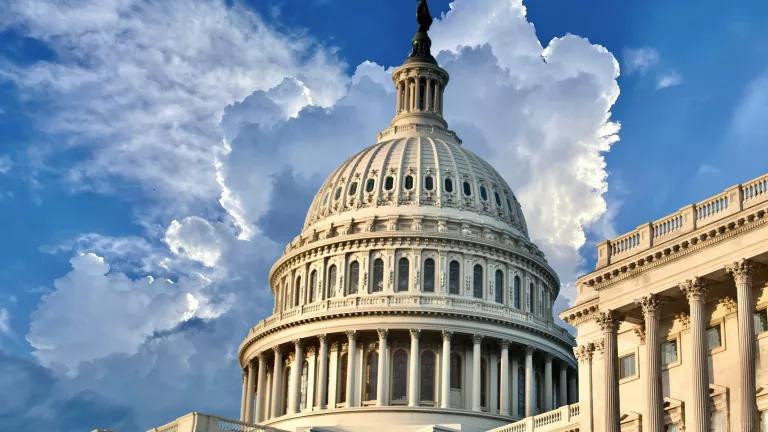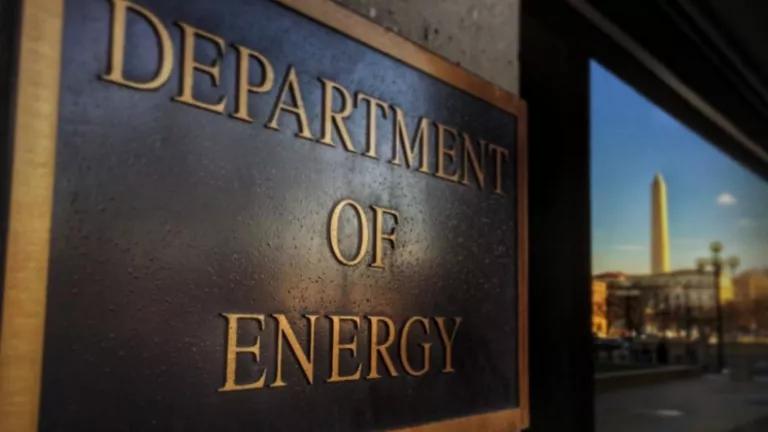The U.S. Supreme Court announced today it will review a lower court decision that had erected a major roadblock to using demand response (paying consumers to reduce electricity use at specific times) as a pathway to maintain electric grid reliability, protect American's pocketbooks, and facilitate a clean energy future. Specifically, the high court accepted a "petition for writ of certiorari" filed on behalf of the Federal Energy Regulatory Commission (FERC) - and supported by a number of diverse interests, including NRDC - asking the Supreme Court to take a look at the lower court decision, Electric Power Supply Association v. FERC, which overturned FERC Order 745.
Although agreeing to review the decision doesn't guarantee it will be reversed, it is good news for our pocketbooks and the planet that the Supreme Court wants to take a closer look at this case. By concluding that demand response resources fall strictly within the domain of state authority, the lower court decision unnecessarily upended a workable division of state-federal authority over demand response and other customer-powered resources that are critical to a reliable, affordable and clean electric grid. The reality is demand response resources are integral components of, and have significant implications for, our backbone transmission grid over which FERC has responsibility.
The lower court, the U.S. Court of Appeals for the D.C. Circuit, had contended that FERC lacks authority to govern some customer participation in wholesale energy markets. The issue, in this case, involved whether FERC could require that wholesale energy market operators pay residential, business and industrial customers who curtail electricity use at the same rate the operators paid power generators for the equivalent amount of electric generation.
For those of you who haven't been following this legal saga for the last few years, some background context may be helpful in contextualizing the importance of the Supreme Court's announcement.
What is demand response, again?
Demand response is customer-powered energy - residential, commercial and industrial consumers get paid to reduce their electricity use in response to a request from their electric grid operator, typically during times of high demand (think hot summer afternoons when air conditioners are running full blast) or other stress on the electric grid (like when a big power plant trips offline). Demand response often plays a critical role in maintaining grid reliability by reducing stress during these high-demand periods or reacting more quickly than large power plants to bring electric supply and demand back into balance after a plant outage.
While we're defining demand response, it's important to note that not all demand response is created equal. It can be customers reducing actual demand, which leads to less carbon and other types of dirty pollution, but it can also be fossil fuel-powered on-site power production (like diesel generators) that customers then turn on when asked to take less power off the electric grid. However, paying customers for the clean version encourages them to engage in demand response more often, which helps avoid the need to generate electricity from fossil fuels that pollute our air. And, in good news last week, the D.C. Circuit determined that this on-site generation is going to have a much tougher time providing demand response in the future because of its dirty air impacts.
And why has everyone been talking about Order 745?
n 2011, FERC, the federal agency largely responsible for regulating our country's backbone electric grid, issued Order 745. It proved so successful in motivating new demand response that the owners of traditional fossil-fueled power plants, upset that demand response was cutting into their revenue by lowering power prices, sued to stop the rule. In a 2-1 opinion last year, the U.S. Court of Appeals for the D.C. Circuit sided with the generators in determining that Order 745 unlawfully intrudes into states' jurisdiction to regulate demand response (more about the decision here). A lengthy and powerful opinion from the dissenting judge questioned whether the majority had overreached legally.
It wasn't just the demand response providers who were unhappy with the D.C. Circuit outcome. FERC, several states, consumer advocates, environmental organizations including NRDC, large and small businesses, universities and even some large utilities all supported the Solicitor General's request that the Supreme Court review the D.C. Circuit decision. These groups shared our belief that the lower court decision incorrectly disrupted a workable and cooperative state-federal regulatory divide.
So what does this Supreme Court announcement mean?
The announcement is a good sign that the Supreme Court wants to ensure a workable division of authority between states and the federal government over our electric grid, which is sorely needed considering the flow of electricity doesn't adhere to state lines. Today's news can also be viewed as the high court recognizing that demand response resources are critical for protecting customers (the Brattle Group has pointed out that demand response participation in wholesale markets saves consumers hundreds of millions, and likely billions, of dollars) and are a key component in maintaining a clean and reliable electric grid.
Remember, it's not a sure thing that the Supreme Court will change the lower court's decision. Today's announcement is an important step, though, toward settling the jurisdictional cloud that the case has brought over what until now has been a workable division of authority between states and FERC.
Briefing for the Supreme Court argument will take place this summer, and the one-hour argument is likely to be heard this fall. Until the Supreme Court rules on the argument, Order 745 will remain in effect. And even if the Supreme Court eventually fails to reverse, this legal process doesn't spell doom for demand response resources - the lower court ruling applies only to demand response resources in wholesale energy markets. Regardless of the eventual high court decision on the merits, demand response resources will continue to provide grid services in wholesale capacity markets and at the retail level. Demand response will continue to play a prominent role in our reliable and affordable clean energy future.



